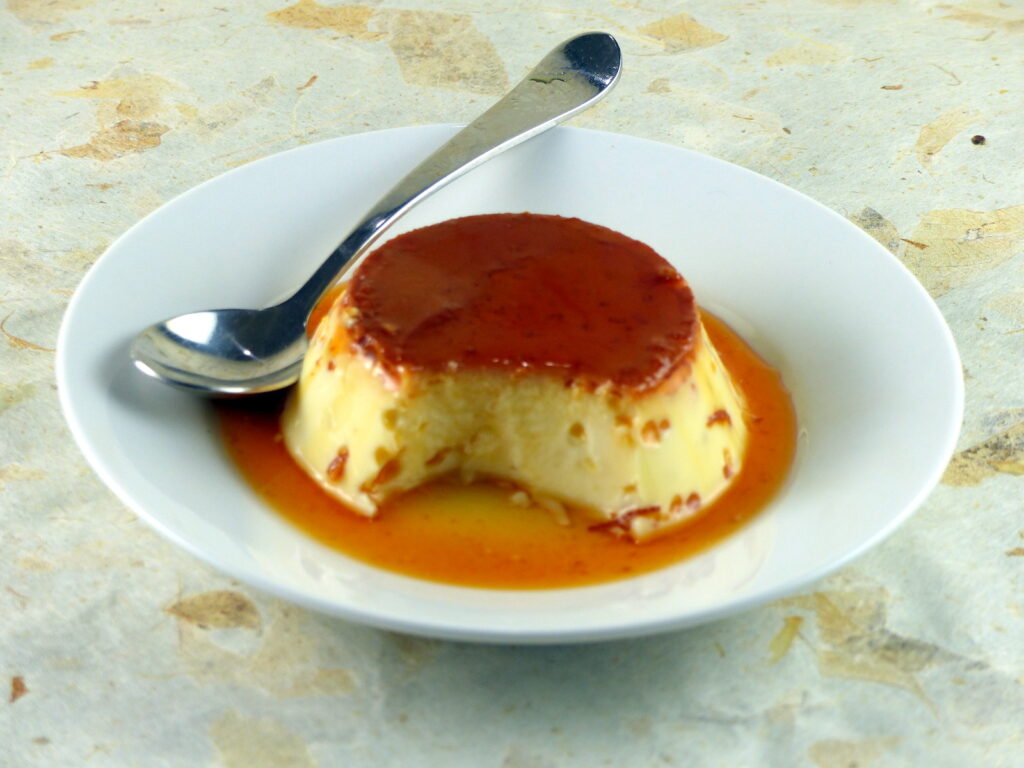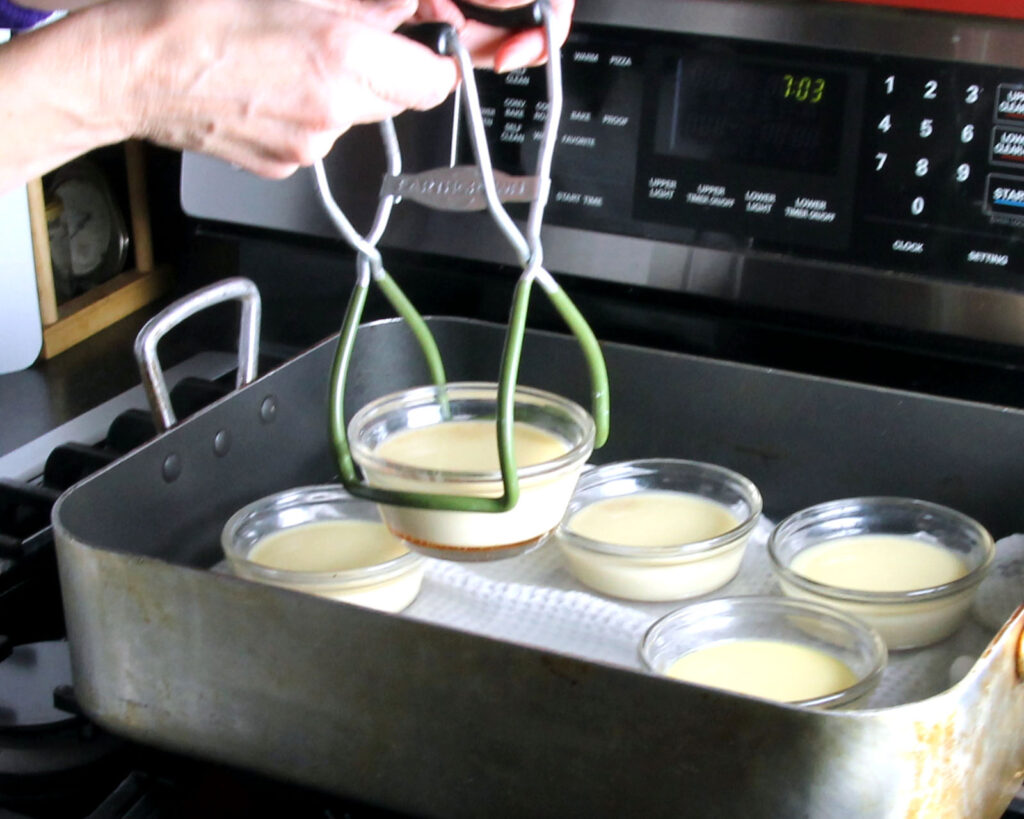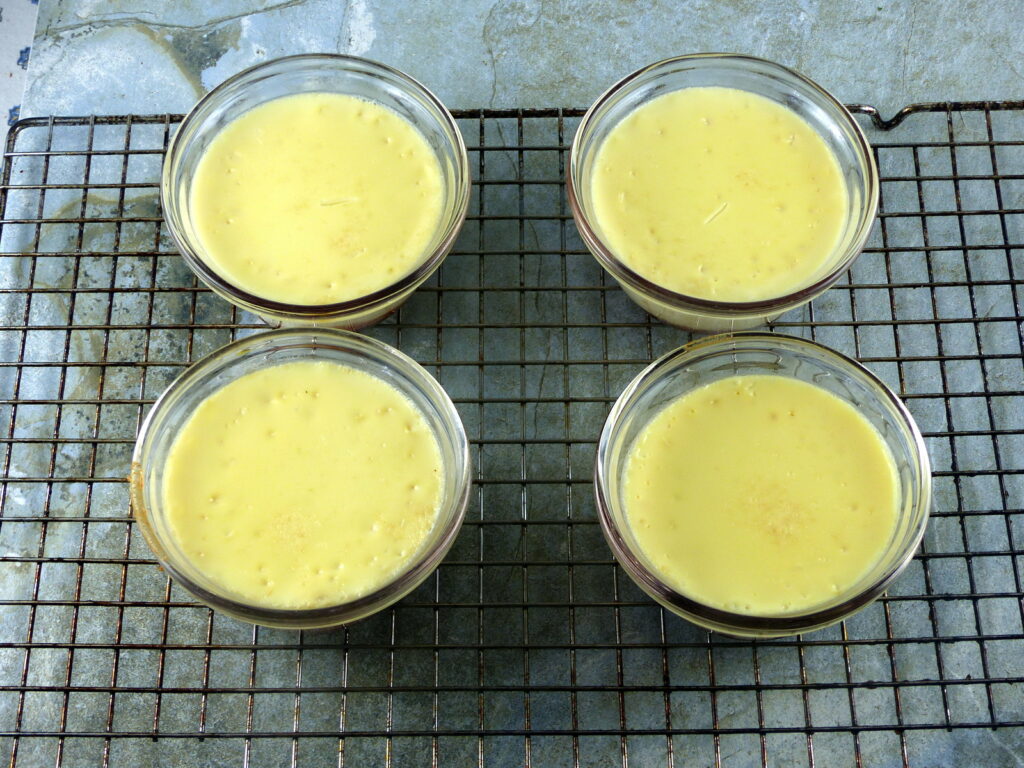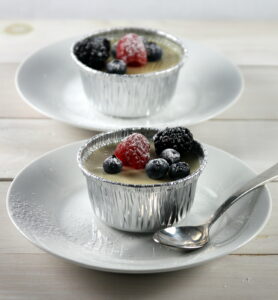In France, crème caramel, also known as crème renversée, is ubiquitous in bistros and family restaurants. With its silky vanilla-scented custard balanced by a tart and slightly bitter caramel sauce, crème caramel makes a perfect finish to any meal. Hands down it is my favorite dessert!
Although crème caramel is often enjoyed in restaurants, it is not difficult to make at home. If you haven’t made it before, preparing the caramel can be intimidating. However, as long as you keep a few pointers in mind, the process should go smoothly. Once the sugar syrup comes to a boil, resist the temptation to stir; this can cause the syrup to crystallize. If the syrup is not caramelizing evenly, you can tilt the saucepan to swirl the syrup to promote uniform caramelization.
Once the syrup starts to color, pay close attention. The syrup can turn from amber to burnt in seconds. You are looking for a deep amber color that is between golden and mahogany. Remember that the caramel will continue to cook with the residual heat of the saucepan. As soon aa you reach the desired color, work quickly to pour the caramel into the custard cups.
Baking the custards in a bain-marie (water bath) ensures the gentle, uniform heat needed to create the delicate consistency that characterizes this dessert. If you have a sous-vide immersion circulator, I recommend that you use it for this recipe. The texture of the custard made this way is phenomenal. For directions, see the tip following the recipe.
The marriage of vanilla custard and caramel is also found in similar desserts. Crème brulée is generally made with a richer custard, and the caramel is created by sprinkling the tops with sugar, then caramelizing the sugar with a blow torch. Flan, another cousin of crème caramel, is popular throughout the Iberian Peninsula and in Latin America. This custard has a sturdier texture, due to the addition of sweetened condensed milk. All these versions are delicious, but my vote for the best dessert ever goes to this creamy yet light and refreshing crème caramel. Profitez-en!
Yield: 6 servings.
Equipment: Six 6-ounce (3/4-cup) ramekins; a roasting pan or a 9-by-13-inch baking dish for the bain-marie (water bath); a fine sieve.
Ingredients
Caramel:
1/3 cup granulated sugar
3 tablespoons water
Custard:
2 cups whole milk
2 large eggs
2 large egg yolks
1/3 cup granulated sugar
2 teaspoons pure vanilla extract
Preparation
1. To prepare the caramel: Preheat the oven to 325ºF. Set 6 custard cups close to the stove. Place 1/3 cup sugar and the water in small heavy saucepan (not a dark-colored saucepan). Cover the pan and bring to a simmer over medium-high heat. Remove the cover and reduce the heat to medium-low. Cook, without stirring, until the syrup turns a rich amber color, 6 to 8 minutes. You can tilt the saucepan to swirl the syrup, if it is not caramelizing evenly.
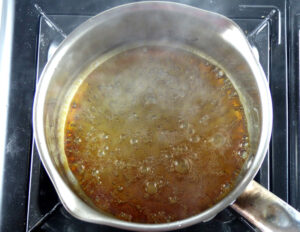
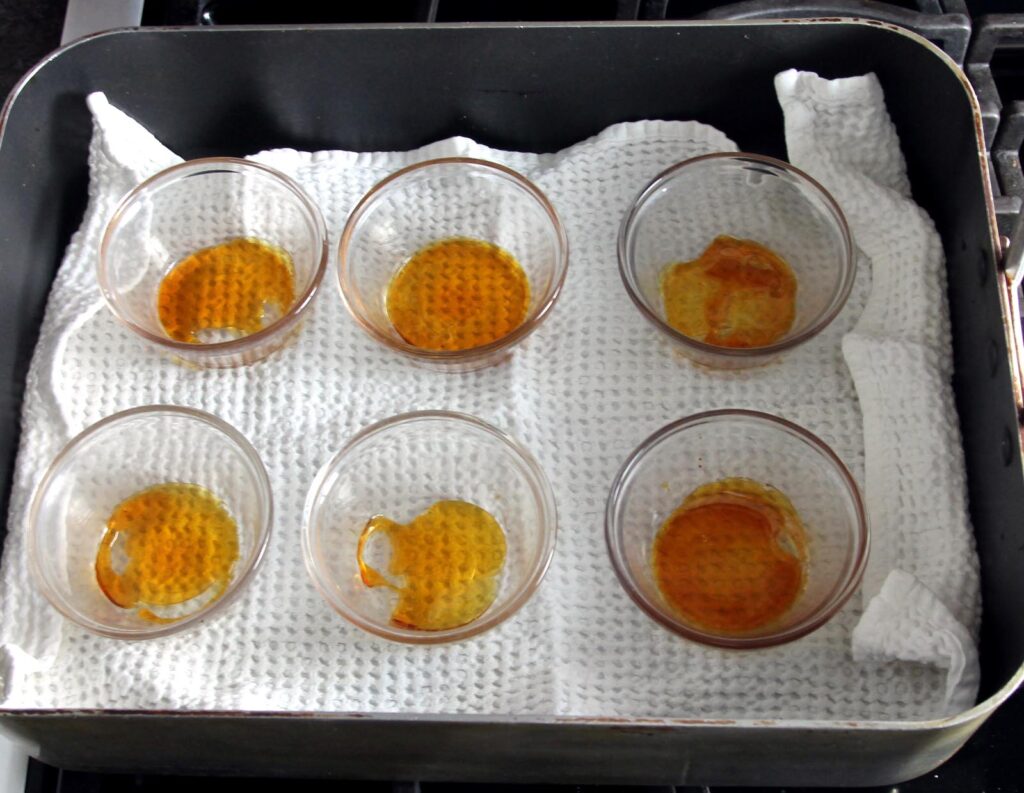
Working quickly, divide the syrup among the custard cups. Swirl the caramel around each ramekin to coat the bottoms evenly. Set the custard cups aside.
2. To prepare the custards: Bring a kettle of water to a boil for the bain-marie. Heat the milk in a 4-cup glass measuring cup in the microwave at high power until steaming hot, but not boiling, 2½ to 3 minutes.
3. Whisk the eggs, egg yolks and 1/3 cup sugar in a mixing bowl until blended. Gradually pour in the hot milk, while whisking gently. Whisk in the vanilla. Do not whisk vigorously because you want to avoid creating a lot of bubbles. Pass the egg mixture though a fine sieve into the 4-cup measure. Skim off any bubbles. Divide the custard among the caramel-lined custard cups.
4. To bake the custards: Line the bottom of a roasting pan or 9-by-13-inch baking dish with a kitchen towel. Set the custard cups on the towel. Pour in boiling water to come about ½ inch up the sides of the custard cups. Cover the pan with foil. Bake the custards until set, 40 to 50 minutes. The custards will jiggle slightly, and the tip of a sharp knife inserted in the center should come out clean.
Transfer the custard cups to a rack and let cool to room temperature. (If you have canning tongs, use them to lift the custard cups from the boiling water and transfer them to the rack.) Cover the custards with plastic wrap and refrigerate until chilled, at least 1 hour. (The custards will keep, covered, in the refrigerator for up to 4 days.)
5. To serve: Run a paring knife around the sides of a custard cup to loosen the edges. Invert a small plate over the custard. Grasping the custard cup and the plate, quickly turn both over and give a downward shake. The custard and accompanying caramel sauce should release from the custard cup. Repeat with the remaining custards.
Tip: Sous-vide crème caramel. Prepare the water bath and set the circulator temperature at 80°C/176°F. Use seven 4-ounce mason jars with two-piece screw-top lids. Make the caramel with ½ cup sugar and ¼ cup water as directed in Step 1. Divide the caramel among the jars. Prepare the custard as directed in Steps 2 and 3. Secure the jar lids finger-tip tight. (Screw on the bands just until you start to feel resistance. You need to allow some air to escape air during cooking.) Gently lower the jars into the water bath. Cook for 1 hour. Remove the jars from the water bath using canning tongs or tongs. Dry the tops before removing the lids. Check for doneness. If the custards have not set, return them to the water bath for a few more minutes. Let the custards cool on a rack.
Tip: Crème caramel for a crowd. In 2016, I prepared over 100 crème caramel desserts for an Alliance Française Celebration of Francophonie dinner. We also featured this treat at an Alliance Dessert Extravaganza event. To make this quantity, I used foil custard cups. When I tested the recipe using foil cups, rather than glass ramekins, I learned that the caramel continues to cook in the foil and risks getting too dark. To compensate, immediately after pouring the caramel into the cups, I moved the cups to a pan filled with ice water to arrest the cooking.
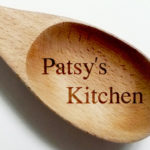
Patsy Jamieson
